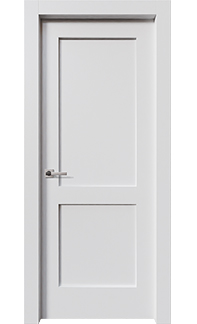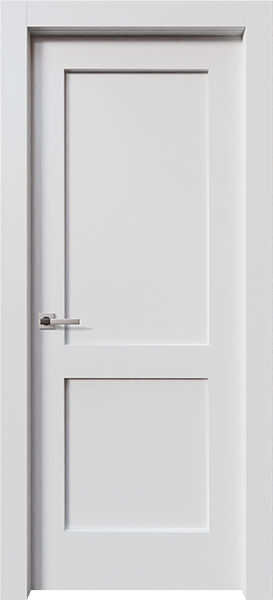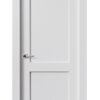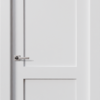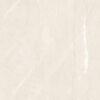Description
THE DOOR NAME ORIGIN – “SHAKER STYLE 2 PANEL”
Depending on what you’re looking for, this no-frills interior door model may be the answer – may fit right in your decor. Its themes deviate from the “pure simplicity” concept, championed by the Shakers, in this important aspect: the design contains a hint of the times past, i.e. the epochs preceding the one in which this particular style came into fashion. The two panels are not equal in size: the lower one is smaller. This subtle trick preserves the elegance for which Baroque was famous without falling into the trap of Baroque’s brazen luxury. This interior door is truly easy on the eyes.
And, and this is important, it costs less than the interior doors in our other collections. Those Shaking Quackers most certainly had a point, emphasizing functionality and favoring simplicity over luxury.
They had their reasons. Their movement was at its height in the middle of the Nineteenth Century, which was when their community had the most members, and the period was considered its “golden age.” It had expanded from New England to the Midwestern states of Indiana, Kentucky and Ohio. It was during this period that the Shakers became known for their furniture design and craftsmanship. Make no mistake: they were excellent craftsmen, conscientious and imaginative.
It takes just as much imagination to make something simple and elegant as it does to make something sumptuous. Compared to the opuses by the late Romantic composers, Ludwig van Beethoven’s music is simple, but is it any less inspired? Giuseppe Verdi’s operatic themes have been laughed at as “primitive” and “simplistic” by many of the latter-day composers who were a lot less popular (and, let me hasten to add, far less gifted).
Simplicity was the world’s reaction to the American and French Revolutions, among other things. Whilst rebelling against tyranny, good folks also rebelled against the “old ways,” with their excessive, and oftentimes wasteful, approach to everything, including architecture and fashion (and interior doors, of course). Tails jackets, trousers, and simple shoes replaced elaborate doublet, camisole, stockings, shoe buckles, overcoats, and wigs. Victorian dresses are hardly as intricate as the designs preferred by the ladies-in-waiting at Madame de Pompadour’s court. Classicism, which took the world of architecture by storm, was, in a way, a “going back to the roots” movement. Folks from every walk of life suddenly realized that luxury isn’t the answer to everything.
This interior door model does come with every wonderful feature for which Almes Doors are known:
The Italian-made 3D-adjustable self-lubricating concealed hinges are present, making the installation a walk in the park and ensuring that your interior door will never creak. Concealed? Yes, additional elegance points. No barrels and no pin – because there is no pin.
The good old magnetic lock, soundless and trustworthy, check.
And, of course, the automatic sweep is a popular option for many reasons, but let me mention two: the sound-proofing and thermal insulation qualities. Amazing. Way above industry standards.
Oh, and, of course, picking just the right color for your interior door can be a lot of fun. As a member of the Hi-Dur collection, this door is “wrapped” rather than finished: an innovative process that effectively fuses the materials through heat and high pressure, rendering the final product warp-proof, fade-proof, and scratch-resistant.
FINISH: PRIMED
The advantages of this approach – of this type of interior door finish – are fairly obvious. Pick a color, any color that suits your projects best. Mix and apply. Re- coat whenever you feel it is necessary to do so. Touch it up. It gives you, the proud owner of these interior doors, complete freedom of choice, and the significant savings, especially where it comes to bulk orders, can be a true source of joy.
As Kurt Vonnegut mentions in one of his novels (Bluebeard, unless I’m mistaken … check it out when you get a chance), the thrill of laying on colors is a large part of the artist’s professional satisfaction. In other words, a keen pleasure.
When back in the remote past visual arts became a field dominated by professionals rather than hobbyists, the main problem of “just laying on paint” became obvious: you can’t.
The medium of choice back then was egg tempera, a permanent, fast-drying substance consisting of colored pigments mixed with a water-soluble binder medium, usually glutinous material such as egg yolk. Portraits and ornaments were executed in this medium, and the wood panel was the surface of choice. One of tempera’s interesting features is that it is not as easily absorbed by wood as other mediums. Some sort of primer was necessary, of course, but pretty much any substance that dried evenly could be used.
The drawbacks of tempera, or pintura al temple, as the Spanish call it, only became obvious with the advent of the Renaissance, when the leading representatives of the trade turned to oil (and interior doors suddenly became a great deal less crude, but that’s a story for another day).
Oil painting is the process of “painting with pigments with a medium of drying oil as the binder.” Commonly used types include linseed (highly preferable in art, though not necessarily in interior doors, mind you), poppy seed, walnut, and safflower.
Today, five hundred years later, it is safe to say that oil is more versatile than pintura al temple – by orders of magnitude. Specifically, the contrasts achieved through the former are much greater, the darks are far deeper, and three- dimensional, highly realistic images are much easier to achieve. Next time you visit a museum, take a closer look at pintura al temple portraits. All of them, without exception, come off as a bit “flat” as opposed to their latter-day counterparts.
Also, where glazing is concerned …
Glazing: a painting technique in which a transparent layer, with just a touch of pigment, is laid over a previously painted surface, allowing light to travel through the glaze and be reflected back off of the opaque layer below. Gentle shadows, subtle changes of color, smooth transitions – all these can be achieved through glazing, which was used by all artists up until the middle of the Nineteenth Century, when artist tubes were invented, revolutionizing the field, and other techniques began to be explored.
Tempera enthusiasts (it takes all kinds to make a world) will assure you that glazing is not just possible in pintura al temple but is actually the basis of the whole enterprise. Well, what are you going to do? They’re enthusiasts.
Anyway, la peinture à l’huile, as the French call it, re-introduced the ancient problem of most surface’s propensity to absorb dipingere, as the Italians call the stuff. Wood or canvas, it is all the same: you’re not going to get very far without a good primer.
Experiments were conducted, and soon rabbit skin glue emerged as the least expensive and most effective solution. It was easy to apply. It dried evenly. It made the application of the l’huile stuff on top of it a walk in the park.
There were drawbacks. Today, rabbit skin glue is considered to be a major cause of cracking by most modern conservators. (Remember, when you visited the Metropolitan Museum of Art – and did you see those interior doors? … some of them are quite something … – most “old masters” pictures are completely covered with a cobweb of cracks? There you go). Because the glue is hygroscopic, it continually absorbs moisture from the atmosphere, causing the glue to swell and shrink as ambient humidity levels change. Over many humidity cycles, this repeated flexing causes the brittle oily layers to crack.
To combat this problem, modern primers are made of acrylic materials which are guaranteed not to cause any damage to the dipingere. No bubbling, no cracks. Your interior doors are safe.

